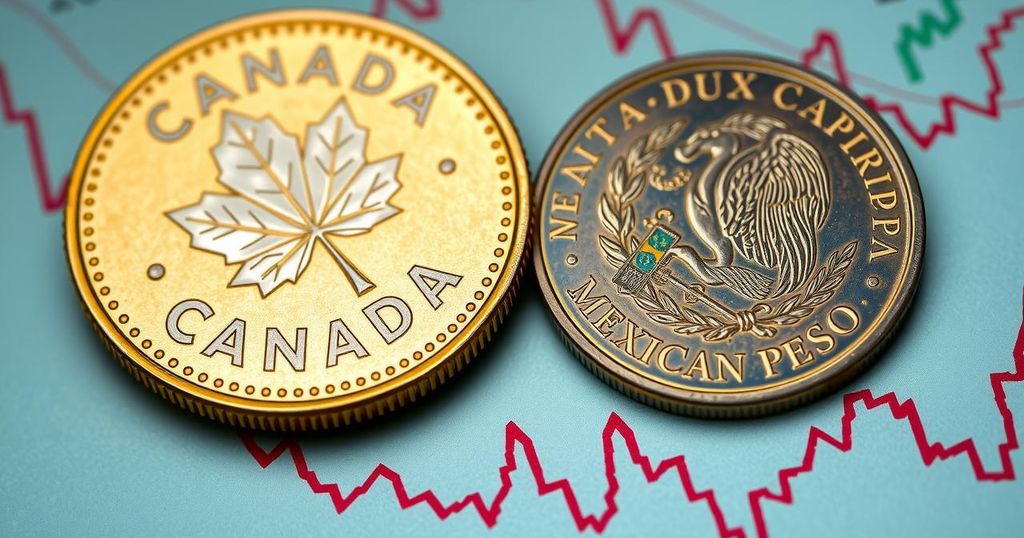The Canadian dollar has weakened more than the Mexican peso since Donald Trump’s inauguration, with analysts citing tariffs and economic vulnerability as primary reasons. Analysts predict that Mexico’s ability to negotiate concessions and a softer response to tariffs could benefit its currency, while Canada’s new leadership may adopt a tougher stance, potentially worsening the loonie’s situation.
The Canadian dollar has been depreciating more significantly than the Mexican peso, despite both currencies being influenced by tariffs during Donald Trump’s presidency. Since Trump’s inauguration on January 20, the Canadian dollar has fallen by 0.5 percent against the U.S. dollar, while the Mexican peso has appreciated by 3.5 percent. In comparison to 16 major currencies, the Canadian dollar ranks low in performance, placing just above the Taiwanese dollar and South Korean won, while the peso ranks eighth.
Currency analysts attribute the peso’s resilience to its ability to negotiate concessions with the U.S. In contrast, the Canadian economy is perceived as more vulnerable to tariff pressures. Nick Rees of Monex Europe Ltd. stated that Canada’s exposure to tariff negotiations makes the loonie more susceptible. The situation is complicated by the newly elected Liberal leader Mark Carney’s aggressive stance regarding tariffs, asserting that Canadian retaliations will persist until respect is obtained from the U.S.
Meanwhile, Mexico’s President Claudia Sheinbaum has adopted a more conciliatory approach, seeking constructive negotiations on tariffs. This has attracted U.S. Commerce Secretary Howard Lutnick’s praise for Mexico’s measured response compared to Canada’s actions. Analysts from JPMorgan Chase & Co. noted that Mexico has a smoother communication line with the U.S. administration, which may benefit their export negotiations.
Upcoming tariff discussions will shed light on potential sector-specific exemptions, particularly in the auto sector for Mexico. Analysts believe Mexico may limit imports from China and address trade loopholes as part of U.S. negotiations, resulting in favorable outcomes for the peso. Furthermore, Derek Holt from the Bank of Nova Scotia explained that Mexico’s currency faced a sharp decline last year due to domestic issues, contributing to its current resilience compared to the Canadian dollar.
In summary, current developments suggest that the Canadian dollar is facing tougher circumstances as tariff threats from President Trump are perceived as more harshly directed toward Canada. There is speculation that the Bank of Canada may respond by lowering interest rates, which would further weaken the loonie. It remains to be seen how forthcoming negotiations will affect both currencies moving forward.
In conclusion, the Canadian dollar’s depreciation against the Mexican peso amid ongoing tariff pressures highlights the differing economic responses and negotiations between Canada and Mexico. With Canada facing more punitive measures and uncertainty regarding its economic stance under new leadership, the loonie’s vulnerability may persist. Conversely, Mexico’s smoother communication with the U.S. administration suggests a more favorable position for its currency, leaving analysts optimistic about its upcoming negotiations.
Original Source: financialpost.com




